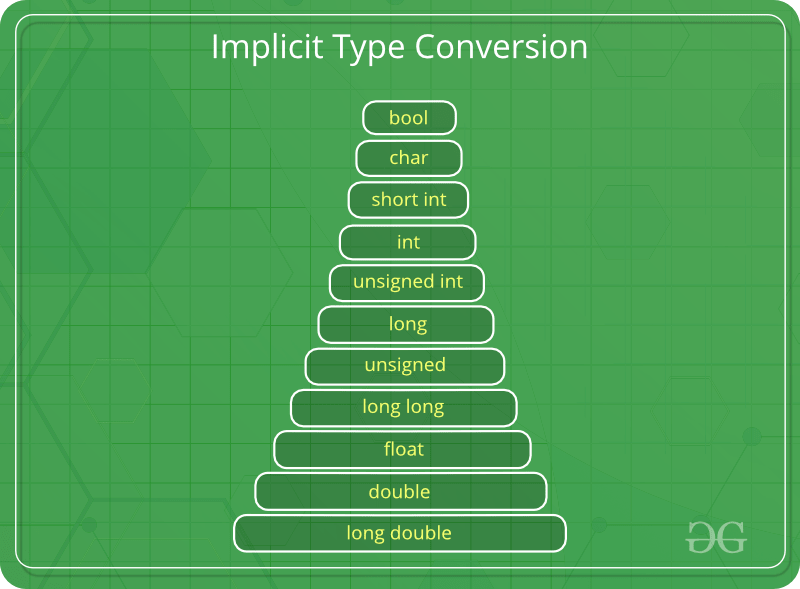Sometimes, strings need to be embedded inside a text file that is both human-readable and intended for consumption by a machine. This is needed in, for example, source code of programming languages, or in configuration files. In this case, the NUL character doesn't work well as a terminator since it is normally invisible (non-printable) and is difficult to input via a keyboard. Storing the string length would also be inconvenient as manual computation and tracking of the length is tedious and error-prone. There is a useful exception to this for program-internal strings and test strings.
Within each "family" of character encodings, there is a set of characters that have the same numeric code values. Such characters include Latin letters, the basic digits, the space, and some punctuation. Most of the ASCII graphic characters are invariant characters. The same set, with different but again consistent numeric values, is invariant among almost all EBCDIC codepages.
For details, see icu4c/source/common/unicode/utypes.h . With strings that contain only these invariant characters, it is possible to use efficient ICU constructs to write a C/C++ string literal and use it to initialize Unicode strings. Unicode has simplified the picture somewhat.
Most programming languages now have a datatype for Unicode strings. Unicode's preferred byte stream format UTF-8 is designed not to have the problems described above for older multibyte encodings. In computer programming, a string is traditionally a sequence of characters, either as a literal constant or as some kind of variable. The latter may allow its elements to be mutated and the length changed, or it may be fixed . A string is generally considered as a data type and is often implemented as an array data structure of bytes that stores a sequence of elements, typically characters, using some character encoding. String may also denote more general arrays or other sequence data types and structures.
There is another, less efficient way to have human-readable Unicode string literals in C and C++ code. ICU provides a small number of functions that allow any Unicode characters to be inserted into a string with escape sequences similar to the one that is used in the C and C++ language. In addition to the familiar \n and \xhh etc., ICU also provides the \uhhhh syntax with four hex digits and the \Uhhhhhhhh syntax with eight hex digits for hexadecimal Unicode code point values. This is very similar to the newer escape sequences used in Java and defined in the latest C and C++ standards. Since ICU is not a compiler extension, the "unescaping" is done at runtime and the backslash itself must be escaped so that the compiler does not attempt to "unescape" the sequence itself.
The compiler's and the runtime character set's codepage encodings are not specified by the C/C++ language standards and are usually not a Unicode encoding form. They typically depend on the settings of the individual system, process, or thread. Therefore, it is not possible to instantiate a Unicode character or string variable directly with C/C++ character or string literals. It is not an issue for User Interface strings that are translated. These UI strings are loaded from a resource bundle, which is generated from a text file that can be in Unicode or in any other ICU-provided codepage.
The binary form of the genrb tool generates UTF-16 strings that are ready for direct use. In order to take advantage of Unicode with its large character repertoire and its well-defined properties, there must be types with consistent definitions and semantics. The Unicode standard defines a default encoding based on 16-bit code units. This is supported in ICU by the definition of the UChar to be an unsigned 16-bit integer type. This is the base type for character arrays for strings in ICU.
String truncation occurs when a destination character array is not large enough to hold the contents of a string. String truncation may occur while reading user input or copying a string and is often the result of a programmer trying to prevent a buffer overflow. While not as bas as a buffer overflow, string truncation results in a loss of data and, in some cases, can lead to software vulnerabilities. The code in Figure 2–5, for example, will truncate user input exceeding 11 characters.
In C++ there are two types of strings, C-style strings, and C++-style strings. The definition of a string would be anything that contains more than one character strung together. However, single characters will not be strings, though they can be used as strings. Surrounded by quotation marks (ASCII 0x22 double quote "str" or ASCII 0x27 single quote 'str'), used by most programming languages. Strings are typically implemented as arrays of bytes, characters, or code units, in order to allow fast access to individual units or substrings—including characters when they have a fixed length.
A few languages such as Haskell implement them as linked lists instead. ICU string handling functions (including append, substring, etc.) do not automatically protect against producing malformed UTF-16 strings. Most of the time, indexes into strings are naturally at code point boundaries because they result from other functions that always produce such indexes.
However, because C-style strings are character arrays, it is possible to perform an insecure string operation even without invoking a function. Figure 2–8 shows a sample C program that contains a defect resulting from a string copy operation but does not call any string library functions. Another common problem with C-style strings is a failure to properly null terminate. In Figure 2–7, the static declarations for the three character arrays (a[], b[], and c[]) fail to allocate storage for the null-termination character. As a result, the strcpy() to a writes a null character beyond the end of the array.
Depending on how the compiler allocates storage, this null byte may be overwritten by thestrcpy() on line 6. If this occurs, a now points to an array of 20 characters, while b points to an array of 10 characters. Unbounded string copies are not limited to the C programming language. For example, if a user inputs more than 11 characters into the C++ program shown in Figure 2–4, it will result in an out-of-bounds write.
Unbounded string copies occur when data is copied from an unbounded source to a fixed length character array . The interpretation of the byte or wchar_t values depends on the platform, the compiler, the signed state of both char and wchar_t, and the width of wchar_t. These characteristics are not specified in the language standards. When using internationalized text, the encoding often uses multiple chars for most characters and a wchar_t that is wide enough to hold exactly one character code point value each. Some APIs, especially in the standard library , assume that wchar_t strings use a fixed-width encoding with exactly one character code point per wchar_t. We can also follow a second approach where we need to run only one for loop for traversing the main string.
We will take a pointer for substring starting from the first index. We will compare every character in the string and check with the pointer at the substring. The pointer will increase by one if the character matches or it will be reset to zero. We also need to check if the pointer at substring has a value equal to the length of the substring, then return true.
This approach is more efficient than the first approach and its time complexity is O. A similar result holds for functions of n-variables. Determining the containment set of values that must be included when the interval contains values outside the domain of f is discussed in the supplementary paper cited in Section 2.11 References. The results therein are needed to determine the set of values that a function can produce when evaluated on the boundary of, or outside its domain of definition. This set of values, called the containment set is the key to defining interval systems that return valid results, no matter what the value of a function's arguments or an operator's operands. As a consequence, there are no argument restrictions on any interval functions in C++.
This section lists the type-conversion, trigonometric, and other functions that accept interval arguments. The symbols and in the interval are used to denote its ordered elements, the infimum, or lower bound and supremum, or upper bound, respectively. In point (non-interval) function definitions, lowercase letters x and y are used to denote floating-point or integer values. String functions are used to create strings or change the contents of a mutable string.
They also are used to query information about a string. The set of functions and their names varies depending on the computer programming language. While character strings are very common uses of strings, a string in computer science may refer generically to any sequence of homogeneously typed data.
A bit string or byte string, for example, may be used to represent non-textual binary data retrieved from a communications medium. If the programming language's string implementation is not 8-bit clean, data corruption may ensue. The differing memory layout and storage requirements of strings can affect the security of the program accessing the string data. String representations adopting a separate length field are also susceptible if the length can be manipulated. In such cases, program code accessing the string data requires bounds checking to ensure that it does not inadvertently access or change data outside of the string memory limits. The core data structure in a text editor is the one that manages the string that represents the current state of the file being edited.
If the length is not bounded, encoding a length n takes log space (see fixed-length code), so length-prefixed strings are a succinct data structure, encoding a string of length n in log + n space. Most string implementations are very similar to variable-length arrays with the entries storing the character codes of corresponding characters. The principal difference is that, with certain encodings, a single logical character may take up more than one entry in the array. This happens for example with UTF-8, where single codes can take anywhere from one to four bytes, and single characters can take an arbitrary number of codes. In these cases, the logical length of the string differs from the physical length of the array .
UTF-32 avoids the first part of the problem. Logographic languages such as Chinese, Japanese, and Korean need far more than 256 characters (the limit of a one 8-bit byte per-character encoding) for reasonable representation. The normal solutions involved keeping single-byte representations for ASCII and using two-byte representations for CJK ideographs. Use of these with existing code led to problems with matching and cutting of strings, the severity of which depended on how the character encoding was designed.
Other encodings such as ISO-2022 and Shift-JIS do not make such guarantees, making matching on byte codes unsafe. These character sets were typically based on ASCII or EBCDIC. If text in one encoding was displayed on a system using a different encoding, text was often mangled, though often somewhat readable and some computer users learned to read the mangled text. These are strings derived from the C programming language and they continue to be supported in C++. These "collections of characters" are stored in the form of arrays of type char that are null-terminated (the \0 null character).
Even though it is fairly efficient to copy UnicodeString objects, it is even more efficient, if possible, to work with references or pointers. The previous method could be implemented by the user-defined function that takes a single string argument and checks if it is empty. This function would mirror the behavior of the empty method and return a bool value.
The following example demonstrates the same code example with the custom-defined function checkEmptyString. Notice that the function contains only one statement as the return type of the comparison expression would be boolean, and we can directly pass that to the return keyword. As shown in CODE EXAMPLE 1-6, programs must use character input and output to exactly echo input values and internal reads to convert input character strings into valid internal approximations. Interval arithmetic expressions are constructed from the same arithmetic operators as other numerical data types. In contrast, point expression results can be any approximate value.
The three examples in this section illustrate how to use the interval constructor to perform conversions from floating-point to interval-type data items. CODE EXAMPLE 2-5 shows that floating-point expression arguments of the interval constructor are evaluated using floating-point arithmetic. The internal approximation of a floating-point constant does not necessarily equal the constant's external value.
For example, because the decimal number 0.1 is not a member of the set of binary floating-point numbers, this value can only be approximated by a binary floating-point number that is close to 0.1. For floating-point data items, the approximation accuracy is unspecified in the C++ standard. For example, the mathematical interval [0.1, 0.2] is represented by a string "[0.1,0.2]". First argument to the program equals or exceeds 128 characters , the program writes outside the bounds of the fixed-size array. Clearly, eliminating the use of dangerous functions does not guarantee your program is free from security flaws.
In the following sections, you will see how these security flaws can lead to exploitable vulnerabilities. The leftstr string compares each character with the second string from the left side till the end of both strings. And, if both the strings are equal, the strcmp() function returns strings are equal. The strcmp() is a pre-defined library function of the string.h header file.
The strcmp() function compares two strings on a lexicographical basis. In this tutorial, we'll learn methods to compare strings in C++. Consider a scenario wherein you are required to enter your name and password to login to a particular website. In such cases, at the back end, we need to build and script functions to check and compare the input string with the string stored in the data base. C++ Program example – This program check if a character in string is a digit. For example, if input string is "hello65", then this string will be traversed in for loop and isDigit function will check each character if it is digit.
If it is a digit then it will print the digits e.g. 6 5 etc. For example, length("hello world") would return 11. Another common function is concatenation, where a new string is created by appending two strings, often this is the + addition operator. The function isalpha() is used to check that a character is an alphabet or not. This function is declared in "ctype.h" header file. It returns an integer value, if the argument is an alphabet otherwise, it returns zero.
It is sometimes useful to test if a 16-bit Unicode string is well-formed UTF-16, that is, that it does not contain unpaired surrogate code units. For a boolean test, call a function like u_strToUTF8() which sets an error code if the input string is malformed. Sometimes, Unicode code points need to be accessed in C for iteration, movement forward, or movement backward in a string. A string might also need to be written from code points values.
ICU provides a number of macros that are defined in the icu/source/common/unicode/utf.h and utf8.h/utf16.h headers that it includes (utf.h is in turn included with utypes.h). A simple solution is to test the length of the input using strlen()and dynamically allocate the memory, as shown in Figure 2–3. The call to malloc() on line 2 ensures that sufficient space is allocated to hold the command line argument argv and a trailing null byte. Thestrdup() function can also be used on Single UNIX Specification, Version 2 compliant systems. The strdup() function accepts a pointer to a string and returns a pointer to a duplicate string. The strdup()function allocates memory for the duplicate string.


























No comments:
Post a Comment
Note: Only a member of this blog may post a comment.